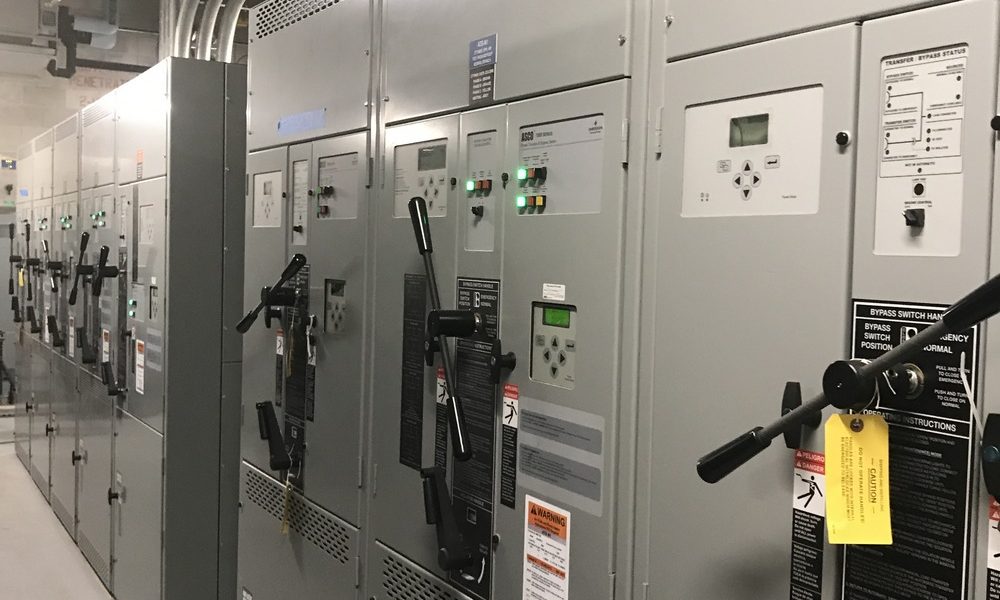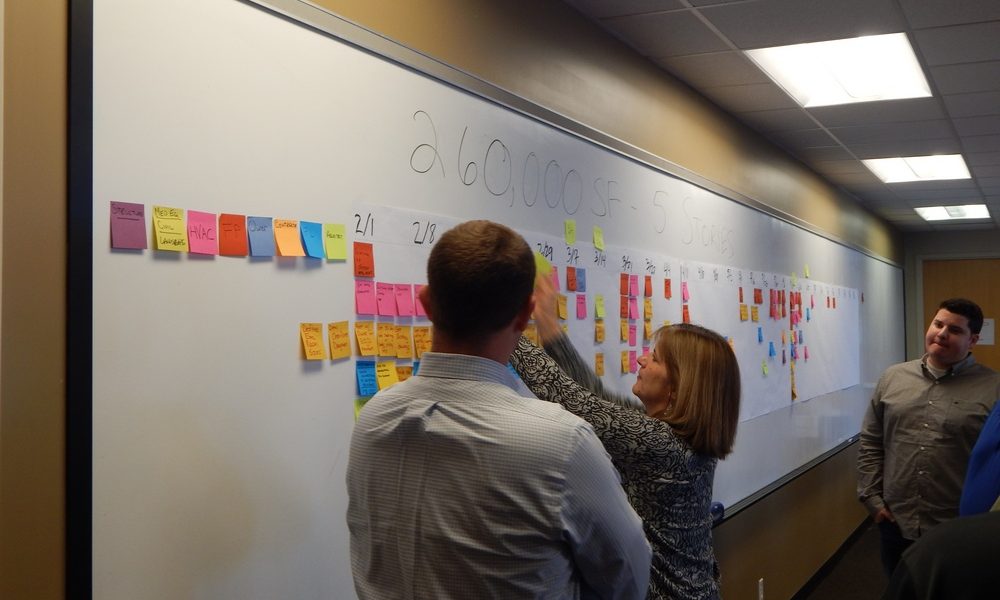 Prioritizing the building systems that will be included in the emergency power systems helps allocate resources where most needed when an influx of patients following a disaster overburdens such infrastructure.
Prioritizing the building systems that will be included in the emergency power systems helps allocate resources where most needed when an influx of patients following a disaster overburdens such infrastructure.  Pull-planning can be a useful process for ensuring that all key issues are identified, along with required lead time to address.
Pull-planning can be a useful process for ensuring that all key issues are identified, along with required lead time to address.  Reliability and availability of backup products are an important consideration. If the products have a web-based application, cyber security risks can be associated with their use.
Reliability and availability of backup products are an important consideration. If the products have a web-based application, cyber security risks can be associated with their use. Subscribe Now
8 Steps to Being Disaster Ready
By James Ferris
Successfully operating a hospital and providing exceptional care on a conventional day requires significant leadership. Yet, in the case of an emergency or disaster, the need for swift decisive action is exponentially important. Being prepared in advance is the key.
Deploying a well thought-out disaster preparation plan optimizes a leader’s ability to maintain operations and care delivery through any type of adverse situation. Because there is simply no way to know what might happen or when, a thoroughly vetted response plan —examined against a variety of situations — can provide the needed resiliency in the face of the unexpected.
A biological threat can be challenging to prepare for because such threats take so many different forms. An outbreak of a highly contagious disease presents a challenge of insufficient quarantine spaces to isolate staff, other patients, as well as visitors from the infection source. Another increasingly likely scenario in today’s world is an active shooter situation, or even terrorist attack.
While natural disasters are the most obvious emergencies to prepare for, savvy healthcare leaders recognize how an array of situations can affect operations, especially for healthcare facilities.
Key insights
Examine day-to-day processes. Scrutinize the disaster plan by examining day-to-day processes for services and supplies that may be taken for granted—waste collection, pharmacy supply, laundering linens, etc.—and define how these processes will be handled without conventional systematic support.
For example, if a healthcare system uses consolidated laundry or central sterile at an offsite location, a fuel pump, stored fuel and/or multiple vehicles are vital for the process of transporting materials. These can be easily overlooked but are absolutely essential.
Prioritize key building systems. Prioritizing the building systems that will be included in the emergency power systems helps allocate resources where most needed when an influx of patients following a disaster overburdens such infrastructure.
HVAC systems use most of an emergency power supply so calculating projected usages helps determine backup need, and how much remains for smaller-scale, yet especially valuable systems. For example, leaders can perceive that power for televisions is not necessary, yet televisions can be an invaluable resource to keep patients calm and occupied, allowing staff to continue working without interruption.
Communications infrastructure is vitally important when cell towers are unavailable, so ensuring hard-wired Ethernet communication remains operational is high priority.
Conduct disaster simulations. Conducting disaster simulations is an effective step to reduce panic during an actual event and helps uncover issues yet to be addressed. Something as simple as a readily accessible list of important contacts can significantly contribute to stabilizing a situation.
A mock run of various disaster scenarios exposes areas where additional expertise is needed by prompting discussions about how the team would handle specific system failures.
Replacement parts and materials can be completely unavailable during such an event, so choosing professionals for their expertise and ingenuity, and ensuring a reliable on-hand inventory of useful parts and materials, can be the key to maintaining operations.
Staff readiness. Just as important as the building systems is staff readiness. In addition to developing detailed protocols and training employees, their stress levels should not be overlooked.
During an emergency, staff will still be caring for patients while managing concerns about whether their own homes are still standing. They may have an increased workload as patients’ families may stay at the hospital if their homes are uninhabitable. Being as thorough as possible in preparations and processes ultimately makes care delivery easier for everyone.
Utilities. Utilities are always working in the background, and often only noticed and appreciated when they are no longer fulfilling their critical function.
Myriad situations can cause utilities to go offline without any advance warning. For example, the northeast blackout of 2003, which affected multiple states and lasted several days, was the result of one failure, causing an enormous cascading effect.
Compounding the challenge, re-activating utilities in an orderly, sequential manner is no simple task, and necessary to avoid a surge that can compromise the grid, creating even more dangerous conditions. Ensuring a local vendor or utility company holds an on-hand inventory of certain elements—such as transformers of a standard size—makes replacing components without support much easier.
For new construction, planning for flood protection means protecting the healthcare facility from appropriate risks by constructing above grade to protect the interior from flood water and exterior debris entering the building. Also important in new construction: consider possible failure modes and plan around them. This may drive specific redundancy designs and can affect equipment layout and distribution routes.
High-reliability designs —such as data centers — serve as good benchmarks for top performance in this area. Cost considerations need to be factored amidst the changing reimbursement structures that many healthcare facilities undergo, but such costs nearly always prove valuable to ensure seamless utility support during an emergency.
Infrastructure. In many healthcare facilities, infrastructure is understandably old, rendering it impossible to ascertain the condition of wires and pipes.
Where budgets are constrained, healthcare leaders can conduct risk analysis to prioritize what equipment to address.
When preparing for emergencies, while redundancy is key, too often redundancy is mistakenly idealized as a solution. Leaders can create a flow chart showing what happens in the case of a failure and where backups are positioned. However, too much redundancy can become counterproductive, unnecessarily driving up costs to effectively test and maintain such systems.
Reliability and availability of backup products are a vitally important consideration. If the products have a web-based application, cyber security risks can be associated with their use. For example, should generator alarms be sent to the facility director through the building control system and what cyber security risks might be associated with that approach?
One of the first steps in planning is to decide whether the facility should have the air conditioning on emergency power. If leaders ensure the A/C is on backup power, adding the rest of the building requires only a marginal increase to the capacity of the generator system (<15%). Ensuring this additional capacity is a small investment, but gives the facility the ability to function exactly the same during and after an emergency, which is invaluable for patient experience, as well as staff providing care through such circumstances.
Emergency power + protective elements. Although emergency power tends to take center stage in disaster planning, leaders are wise to take a holistic view as smaller, unexpected issues can blossom into significant problems.
Fuel reliability is often a significant contributor to many of the generator system problems. Planners want to assess the quality of the fuel, how often it is cleaned and whether or not there is an onsite polisher, which is recommended for new buildings. Routine maintenance of protective elements, such as hurricane shutters, flood gates, alarm systems, etc., can prevent a malfunction at a critical moment.
To avoid a situation like this, it is important to look at how all the systems in the building interact.
Facility directors want to assess the specific impacts a shutdown of a single element would have on the healthcare operation. For example, an automatic transfer switch will require maintenance at some point and will need to be taken offline and checked. Would this impact the entire building or only a select area? Is there a bypass option available?
Closure. While healthcare leaders would obviously hope to avoid a facility closure at all cost, circumstances that would necessitate such a decision and evacuation protocol are valuable to define as part of a disaster plan.
Examining this question preemptively reduces the stress and challenges that come with making such an important decision amidst a crisis.
Leaders want to factor a quantitative element to this planning. For example, if it takes eight hours to completely evacuate the building, then the plan must stipulate that evacuation take place when there is at least eight hours worth of fuel remaining on essential systems.
Stakeholders want to also decide in advance who stays in the building to keep it running, if anyone, and how to transition systems back online following the episode, factoring which building systems are affected and how.
“It won’t happen here.”
With a solid plan, facility leaders can provide an affirmative response to the question “Are you ready?” Advance consideration helps identify the potential weak points in the disaster plan and what is needed to resolve them.
Such a discussion also helps to guide the allocation of capital dollars toward the highest priorities over the long term. The prevailing consideration in planning is to avoid the idea that “it won’t happen here.”
Although such events are unpredictable and can be categorized as infrequent, they will happen to most healthcare leaders at some point in their careers, so leaders seek to achieve preparedness through a decisive, savvy and reasonable disaster plan.
Photos courtesy of TLC Engineering Solutions.
Author: James Ferris
James D. Ferris, P.E., is chief operating officer with TLC Engineering Solutions. He can be reached at james.ferris@tlc-eng.com or 407-841-9050.
Tags: Best Practices, Disaster proofing, Facilities Management
Posted June 18, 2019
More Articles:
- Coverings 2024
Apr 22, 2024 – Apr 25, 2024 - Hospital, Outpatient Facilities & Medical Office Buildings Summit
Apr 25, 2024 – Apr 25, 2024 - CxA Workshop & Exam
Apr 29, 2024 – Apr 30, 2024 - EMP Seminar & Exam at CxEnergy 2024
Apr 29, 2024 – Apr 30, 2024 - CxEnergy
Apr 29, 2024 – May 2, 2024 - PHCC West 2024
Apr 29, 2024 – May 2, 2024 - Lean in Design Forum 2024
May 1, 2024 – May 2, 2024










